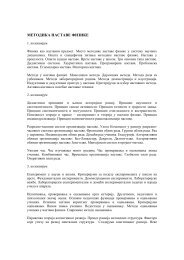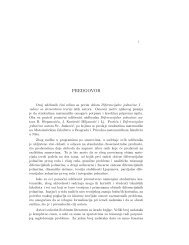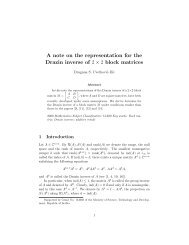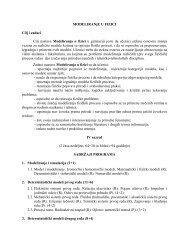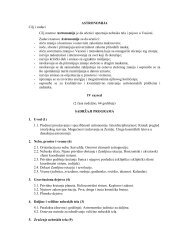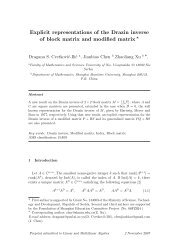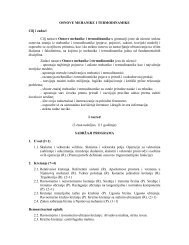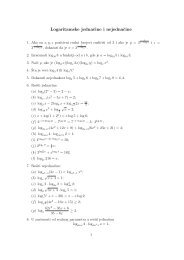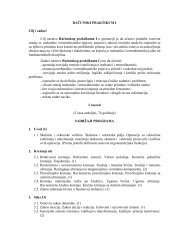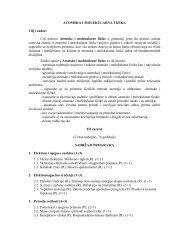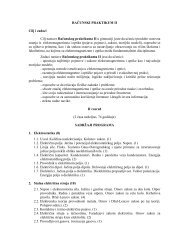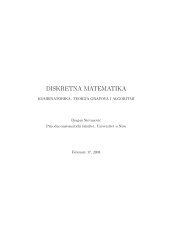The Hankel Transform of the Sum of Consecutive Generalized ...
The Hankel Transform of the Sum of Consecutive Generalized ...
The Hankel Transform of the Sum of Consecutive Generalized ...
You also want an ePaper? Increase the reach of your titles
YUMPU automatically turns print PDFs into web optimized ePapers that Google loves.
9Example 4.1. For L = 4 we getwherefromQ 0 (x) = 1, ‖Q 0 ‖ 2 = 5,Q 1 (x) = x − 24 5 , ‖Q 1‖ 2 = 1045 ,Q 2 (x) = x 2 − 12713 x + 25613 , ‖Q 2‖ 2 = 108813 ,Q 3 (x) = x 3 − 54117 x2 + 109617 x − 134417 , ‖Q 3‖ 2 = 569617 ,α 0 = 24 5 , β 0 = 5, α 1 = 32365 , β 1 = 10425 , α 2 = 1104221 , β 2 = 680169 .Hence( 104) 2h 1 = a 0 = 5, h 2 = a 2 0β 1 = 104, h 3 = a 3 0β1β 2 2 = 5 3 68025 169 = 8704.At <strong>the</strong> beginning, we will notice that in <strong>the</strong> definition <strong>of</strong> <strong>the</strong> weight appears <strong>the</strong>square root member.That’s why, let us consider <strong>the</strong> monic orthogonal polynomials {S n (x)} with respectto <strong>the</strong> p (1/2,1/2) (x) = √ 1 − x 2 on <strong>the</strong> interval (−1, 1). <strong>The</strong>se polynomials aremonic Chebyshev polynomials <strong>of</strong> <strong>the</strong> second kind:S n (x) = sin( (n + 1) arccos x )2 n · √1− x 2<strong>The</strong>y satisfy <strong>the</strong> three-term recurrence relation (Chihara [?]):with initial valueswhereS n+1 (x) = (x − α ∗ n) S n (x) − β ∗ nS n−1 (x) (n = 0, 1, . . .), (29)S −1 (x) = 0, S 0 (x) = 1,αn ∗ = 0 (n ≥ 0) and β0 ∗ = π 2 , β∗ n = 1 (n ≥ 1).4If we use <strong>the</strong> weight function ŵ(x) = (x − c) p (1/2,1/2) (x), <strong>the</strong>n <strong>the</strong> correspondingcoefficients ˆα n and ˆβ n can be evaluated as follows (see, for example, Gautschi [?])λ n = S n (c),λ nˆα n = c − λ n+1− βn+1∗ ,λ n λ n+1ˆβ n = βn ∗ λ n−1 λ n+1(n ∈ Nλ 2 0 ).nFrom <strong>the</strong> relation (21), we conclude that <strong>the</strong> sequence {λ n } n∈N satisfies <strong>the</strong> followingrecurrence relation:(30)4λ n+1 − 4cλ n + λ n−1 = 0 (λ −1 = 0; λ 0 = 1). (31)



